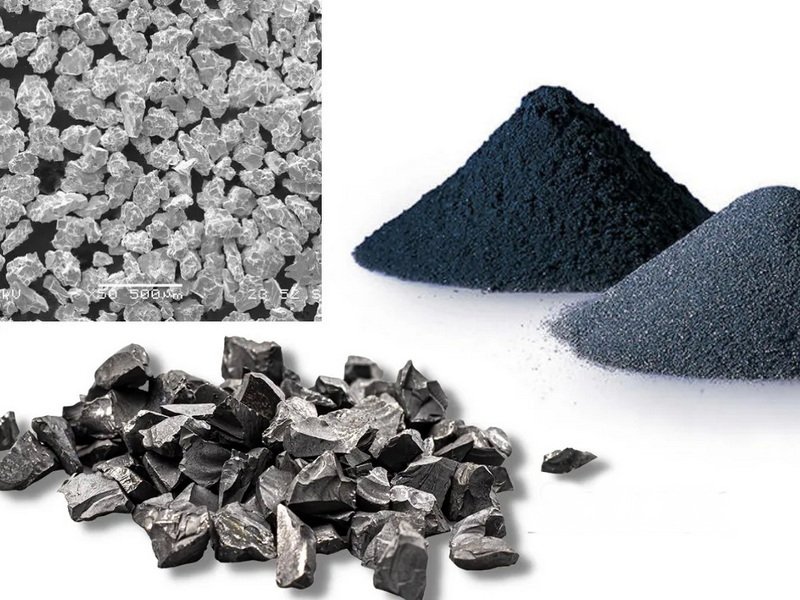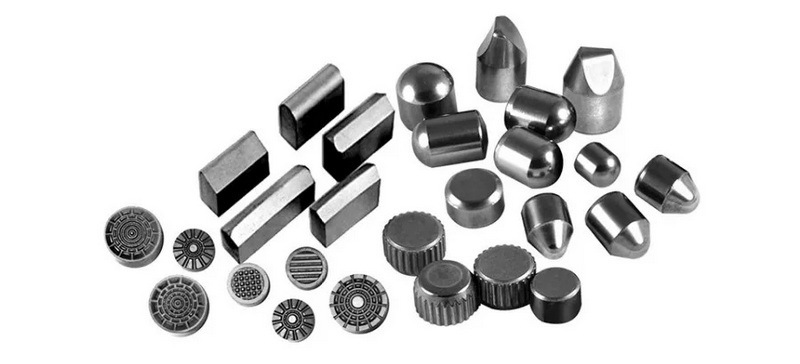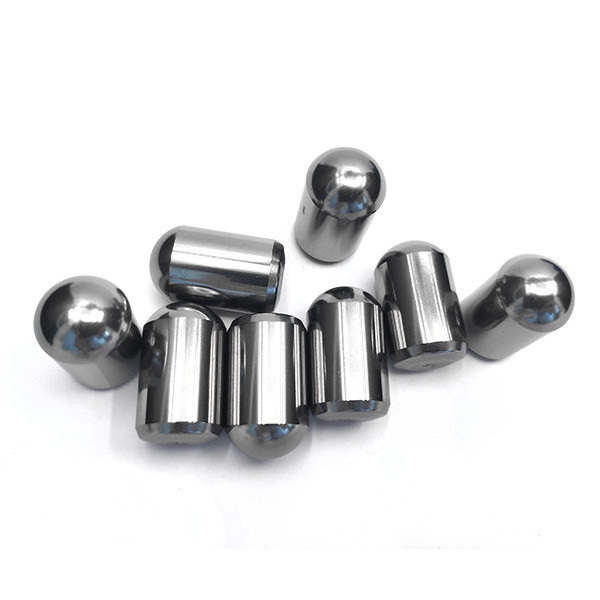Content Menu
● Introduction to Tungsten Carbide
>> Tungsten Carbide Properties
● The Process of Making Tungsten Carbide
>> Synthesis of Tungsten Carbide
>> Forming Tungsten Carbide Rings
● Achieving a Black Finish
>> Ion Plating
>> Physical Vapor Deposition (PVD)
● Comparison with Other Materials
>> Black Tungsten vs. Black Ceramic
● Challenges and Considerations
● Maintenance and Care
>> Tips for Maintaining Black Tungsten Carbide Jewelry
● Aesthetic and Stylistic Considerations
>> Styling Options
● Industrial Applications
>> Industrial Uses
● Environmental Impact
>> Sustainable Practices
● Conclusion
● FAQ
>> 1. What is Tungsten Carbide?
>> 2. How is Tungsten Carbide Made?
>> 3. How Do You Make Tungsten Carbide Black?
>> 4. What are the Advantages of Black Tungsten Carbide Rings?
>> 5. Do Black Tungsten Carbide Rings Require Maintenance?
● Citations:
Tungsten carbide is renowned for its exceptional hardness and durability, making it a popular choice for jewelry and industrial applications. However, its natural silver-gray color may not appeal to everyone. To achieve a black finish, tungsten carbide undergoes a process known as ion plating or physical vapor deposition (PVD). This article will delve into the process of making tungsten carbide black, exploring the techniques and materials involved.

Introduction to Tungsten Carbide
Tungsten carbide is a chemical compound composed of equal parts tungsten and carbon atoms, resulting in a material that is about twice as hard as steel and three times as stiff. Its high melting point and extreme hardness make it ideal for cutting tools, mining equipment, and jewelry.
Tungsten Carbide Properties
- Hardness: Approximately 9.0–9.5 on the Mohs scale.
- Density: Twice as dense as steel.
- Melting Point: 2,870°C.
- Applications: Jewelry, cutting tools, mining, and more.
The Process of Making Tungsten Carbide
Before achieving a black finish, tungsten carbide must be synthesized and formed into the desired shape.
Synthesis of Tungsten Carbide
1. Carburization: Tungsten powder is heated with carbon at high temperatures (up to 2,500°C) to form tungsten carbide powder.
2. Mixing with a Binder: The tungsten carbide powder is mixed with a binder, typically cobalt or nickel, to enhance its ductility and formability.
Forming Tungsten Carbide Rings
1. Pressing: The mixture is pressed into a ring shape using high-pressure molds.
2. Sintering: The ring is heated below the melting point of tungsten to solidify the binder, binding the tungsten carbide particles together.
Achieving a Black Finish
To give tungsten carbide rings a black finish, two primary methods are used: ion plating and physical vapor deposition (PVD).
Ion Plating
Ion plating involves bombarding the surface of the tungsten carbide with atomic-sized particles in a vacuum to deposit a hard coating. This process is superior to traditional electroplating due to its increased bonding strength.
Physical Vapor Deposition (PVD)
PVD is similar to ion plating but involves the application of a titanium alloy coating. It is commonly used in the luxury watch industry for colored finishes.
Comparison with Other Materials
Black tungsten carbide rings are often compared to black ceramic rings in terms of durability and aesthetics.
Black Tungsten vs. Black Ceramic
- Durability: Both materials are durable, but tungsten carbide is harder and more scratch-resistant.
- Weight: Tungsten carbide rings are heavier.
- Color: Ceramic maintains its color throughout, while tungsten carbide requires coatings that may wear off.

Challenges and Considerations
While black tungsten carbide rings are highly durable, the black coating can wear off over time, revealing the natural silver-gray color underneath. This requires periodic re-plating to maintain the desired appearance.
Maintenance and Care
To extend the life of the black coating, proper care is essential. This includes avoiding harsh chemicals and abrasive cleaners, which can damage the coating.
Tips for Maintaining Black Tungsten Carbide Jewelry
- Avoid Exposure to Chemicals: Chemicals like bleach or ammonia can damage the coating.
- Use Soft Cleaning Materials: Avoid using abrasive materials that can scratch the surface.
- Regular Inspection: Check for signs of wear and have the coating reapplied as needed.
Aesthetic and Stylistic Considerations
Black tungsten carbide rings offer a sleek, modern look that appeals to those seeking a contemporary style. They can be paired with various metals and gemstones to create unique designs.
Styling Options
- Combining with Silver or Gold: Mixing black tungsten with silver or gold accents creates a striking contrast.
- Adding Gemstones: Diamonds or other gemstones can enhance the ring's visual appeal.
- Engraving: Personalized engravings can add a sentimental touch.
Industrial Applications
Beyond jewelry, black tungsten carbide is used in various industrial settings due to its hardness and resistance to wear.
Industrial Uses
- Cutting Tools: Tungsten carbide is used in drill bits and saw blades for its ability to withstand high friction.
- Mining Equipment: Its durability makes it ideal for parts exposed to harsh conditions.
- Aerospace: Used in components requiring high strength and resistance to heat.
Environmental Impact
The production of tungsten carbide involves mining tungsten, which can have environmental implications. Efforts are being made to improve sustainability in the tungsten supply chain.
Sustainable Practices
- Responsible Mining: Ensuring that tungsten is mined with minimal environmental impact.
- Recycling: Developing methods to recycle tungsten carbide products.
Conclusion
Tungsten carbide's exceptional hardness and durability make it a popular choice for jewelry. Achieving a black finish involves advanced coating techniques like ion plating and PVD. While these methods provide a durable and attractive finish, they may require maintenance over time.

FAQ
1. What is Tungsten Carbide?
Tungsten carbide is a chemical compound made of equal parts tungsten and carbon, known for its extreme hardness and durability. It is used in cutting tools, mining equipment, and jewelry.
2. How is Tungsten Carbide Made?
Tungsten carbide is made by heating tungsten powder with carbon at high temperatures, then mixing it with a binder like cobalt or nickel. The mixture is pressed and sintered into the desired shape.
3. How Do You Make Tungsten Carbide Black?
Tungsten carbide is made black through processes like ion plating or physical vapor deposition (PVD), which apply a durable coating to achieve the desired color.
4. What are the Advantages of Black Tungsten Carbide Rings?
Black tungsten carbide rings are highly durable and scratch-resistant, making them ideal for everyday wear. They also offer a modern aesthetic that is gaining popularity.
5. Do Black Tungsten Carbide Rings Require Maintenance?
Yes, the black coating on tungsten carbide rings can wear off over time, requiring periodic re-plating to maintain the desired appearance.
Citations:
[1] https://www.peacefieldtitanium.com/blogs/stories/how-tungsten-carbide-rings-are-made-from-mining-to-masterpiece
[2] https://en.wikipedia.org/wiki/Tungsten_carbide
[3] https://hanoverjewelers.com/pages/ion-plating
[4] https://www.vedantu.com/chemistry/tungsten-carbide
[5] https://www.justmensrings.com/blogs/justmensrings/variations-of-style-for-black-tungsten-rings
[6] https://www.zhongbocarbide.com/what-is-black-tungsten-carbide.html
[7] http://www.titaniumkay.com/tungsten-rings/how-tungsten-carbide-rings-are-made/
[8] https://theartisanrings.com/blogs/news/what-is-tungsten-carbide-characteristics-of-tungsten-carbide-rings
[9] https://www.reddit.com/r/jewelers/comments/19c5rm4/is_there_another_way_to_blacken_a_ring_to_make_it/
[10] https://www.larsonjewelers.com/pages/black-tungsten-vs-black-ceramic
















